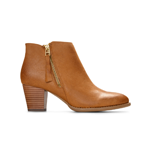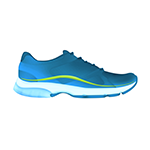
Why You Should Be Wearing Orthotic Boots
Whether you’re shoveling the driveway, commuting to work, or taking a wintery stroll, you’re going to need a reliable pair of boots. But boots are more than just seasonal apparel—they’re an all-year staple of footwear, designed for both fashion and function. Unfortunately, too many boots lead to foot pain, awkward balance, and general discomfort.
That’s where orthotic boots come in.
This article will explain the function of orthotics and how they can benefit you today and in the long run. From arch-support to ankle protection, we’ve compiled some grade-A benefits to ensure you’re walking tall in your new ortho pedic boots .
What Exactly Are Orthotics?
You may already be familiar with orthotics in the context of athletic footwear, but orthotic support can be applied to all types of shoes. So, what are orthotics ? These are medically-designed foot supports, engineered to fit the features of your feet and provide the footbed with support and stability.
Key factors for understanding orthotics include:
- Full-footbed support – Ortho pedic shoes are designed to support your entire foot, from heel to toe. While many inserts may only focus on adding foam or gel padding to your heel, true orthotic insert s are crafted with stability, protection, and comfort in mind.
- Scientifically-backed – Orthopedic doctors and podiatrists recommend and prescribe orthotics. Additionally, many foot specialists work alongside orthotic manufacturers to ensure the highest quality of support. High-quality orthotic shoe companies are transparent about their support and certifications from organizations like The American Podiatric Medical Association.
- Medically designed – Several medical conditions can lead to complicated foot issues and foot pain. Orthotics can provide relief to those suffering from side effects of diabetes, arthritis, and other diseases. They may also ease foot problems and help you avoid foot surgeries.
Orthotics aren’t to be confused with “inserts” or “insoles,” which can be added to your shoes for a bit more comfort to your step. You might come across a shoe insert at the pharmacy or grocery store, and while they may provide some relief, inserts lack the scientific design and engineering of true orthotics.
Custom vs. Standardized Orthotics
When discussing types of orthotics for comfortable arch support , it’s necessary to make a distinction between custom orthotic insole s and over-the-counter orthotics.
Consider the following differences between these two options:
Custom orthotics – Often made using a digital scan or cast of your feet at the direction of a podiatrist or orthopedist, customized orthotics are significantly more expensive than over-the-counter orthotics. While some medical insurance plans may cover part of or the entirety of orthotics, for many this is a costly out-of-pocket expense.
Standardized orthotics – For those interested in the benefits of orthotics without the prohibitive price tag, a standardized or “over-the-counter” version of this technology is available. In fact, you can purchase modern, stylish boots with built-in high-quality orthotics. It’s an affordable and accessible treatment for people looking for relief from foot and heel pain.
Biomechanical Efficiency
No, you haven’t stumbled into a biology lesson. That said, understanding a bit more of the science behind orthotics can provide a little clarity to the subject.
Biomechanics is a multidisciplinary field of science chiefly concerned with the biology of movement. In the context of orthotics, it’s the underlying science used to develop innovative ways to move with stability and comfort.
Consider how biomechanics might affect your feet:
- Arches – Each of us has a unique foot type and with our arches, there is no one-size-fits-all. Deep, flat, or in between, your arches can cause discomfort in the wrong pair of shoes. With the aim of biomechanical efficiency, orthotics can correct arch issues and provide relief no matter your foot type.
- Injuries – Our feet can take a beating, but sometimes a serious injury can affect the overall shape and biomechanical efficiency of our feet. After an injury heals, your movement may be restricted, causing further problems with your stride. Fortunately, the biomechanical corrections provided by orthotics can get you back on your feet and walking comfortably.
Orthotics can make the difference between pain with every step you take and feeling like you’re walking on a cloud. Keep in mind that even those with medium arches can benefit from a pair of built-in orthotics since they provide increased comfort, promote good anatomical arch support when walking, and encourage a number of other important health benefits.
What Are The Benefits of Wearing Orthotic Boots?
When you think of hiking boots , the first thing that comes to mind is most likely the style of the shoe—clunky, sleek, edgy, heeled—not whether your heel or metatarsal pad is being accounted for.
Orthotic boots are essential regardless of your unique style. Whether you prefer to wear motorcycle boots, knee-high styles, or ankle boots, your boots should support, protect, and empower you to keep moving.
Below are a few of the top reasons you should be wearing orthotic boots.
#1 Pain Relief
According to recent studies, 75% of Americans will experience foot problems at one time or another in their lives. If you’re tired of ending your day with aching, sore feet, orthotic boots can be the difference between pain and comfort.
How do orthotic boots help with pain? Consider the following reasons for relief:
- Shock absorption – Orthotic boots have supportive cushioning that delivers shock absorption for every movement, which may help boost your comfort and keep you moving pain-free all day long.
- A better fit – Bunions, calluses, and corns? No, thank you! These common foot conditions are often caused by wearing improperly fitted shoes. Orthotic boots help prevent rubbing and friction that can lead to painful irritation.
We know you’re busy and don’t want to worry about your feet hurting. That’s why orthotic boots are made to be worn every day. There’s no need to accept daily pain when it comes to winter (or summer) boots, so opt for orthotics to stop pain in its tracks.
#2 Improved Balance
Do you find yourself tripping, slipping, or feeling generally awkward on your feet? The improved balance from orthotic boots can help you feel more comfortable on your feet.
Orthotics are designed for maximum balance with key features that support:
- Even weight distribution – Walking on your tiptoes or leaning back on your heels to stay comfortable? Uneven weight distribution can lead to wobbling and unsteady movements. Orthotics are designed to keep your weight evenly distributed across your foot, so each step feels solid.
- Arch support – No matter your foot shape, you can count on orthotic boots to provide anatomical arch support you can feel. With cutting-edge foam technology, orthotics can mold to your foot and provide consistent support for your arches.
#3 Injury Prevention
Foot injuries are a common occurrence, whether you’re working in an active construction zone or just walking down the street. There are dozens of bones, joints, and ligaments in your feet. That means dozens of potential injuries.
That said, you don’t need armor or steel-toed shoes to protect yourself from common foot injuries. Orthotics are a step in the right direction for foot protection.
Orthotic boots can help prevent injuries like:
- Plantar fasciitis – Also known as “policeman’s heel,” plantar fasciitis is the result of inflamed tissue on the bottom of your foot or plantar fascia . This common injury causes excruciating pain with each step, particularly after long sedentary periods. Without proper relief, plantar fasciitis can severely hinder your mobility and lead to hip, leg, or back problems.
- Twisted ankles – Unfortunately, some of us are more prone to experience twisted ankles, especially individuals with high arches. Without support, ankles are more likely to roll, resulting in painful twisting that can lead to sprains or tears.
- Achilles tendon injuries – The largest tendon in your body is also a major risk factor. Your Achilles tendon runs from the base of your heel to your calf, assisting with all of your leg movements. A wrong step can lead to tears, pulls, and serious pain.
#4 Increased Activity
Too often, foot pain interferes with your ability to stay active. It’s difficult to commit to a fitness routine when you’re stuck rubbing your sore feet.
While you may not be working out in your orthotic boots, they could be an important step toward a more active lifestyle. If you can lace up every morning without worrying about unnecessary foot or knee pain and discomfort, who knows where your feet might take you?
Many people are already taking advantage of the support offered by orthotic boots, wearing them during activities like:
- Daily walks
- Bike riding
- Hikes
- Gardening
A healthy lifestyle is all about forward momentum, and with orthotic boots, it’s never been easier to get up and go.
Lace-Up a Pair of Orthotic Boots with Vionic
After exploring the benefits of orthotic boots, you may be asking, “What’s the downside?” We’re here to tell you that there isn’t one. Stylish, comfortable, and affordable orthotic boots can be yours, and the best way to find the perfect pair is only a click away.
At Vionic , all of our casual and winter boots are orthotic friendly, supportive, and provide the perfect amount of cushioning in each and every step. We have earned a place in the industry as an AMPA-trusted resource .
With dedicated foot doctors, research teams, and shoe stylists, you never have to choose between fashion and function when shopping for boots.
Sources:
- “Foot pain is never normal”. APMA. https://www.apma.org/
- Helmer, Jodi. “Do I Need Shoe Orthotics?” WebMD. 12 May, 2021. https://www.webmd.com/pain-management/what-are-shoe-orthotics
- “Biomechanics.” https://www.britannica.com/science/biomechanics-science
- “Facts About Foot Pain.” Orthopedic Associates. https://orthopedicassociates.org/facts-about-foot-pain-that-you-probably-didnt-know/
- “Plantar fasciitis.” Mayo Clinic. https://www.mayoclinic.org/diseases-conditions/plantar-fasciitis/symptoms-causes/syc-20354846
- Sachdev, Poonam. “Achilles Tendon Injuries.” WebMD. 18 October, 2021. https://www.webmd.com/fitness-exercise/guide/achilles-tendon-injury











